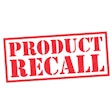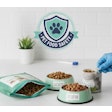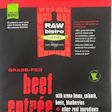As the aftermath of the petfood recalls continues, pet owners and the organizations they turn to for support and information are coming forth with their own prescriptions for what they see as the ills affecting the industry.
Consider these recent headlines:
"Petfood ingredients revealed!" ;
"Trust the hand that feeds you" ; and
"Commercial petfood is killing your dog" .
The content and tone of the various articles, blogs and ads I've read range from thoughtful and well-researched to critical and cynical to personal and even hysterical. But one theme shines through: Pet owners aren't necessarily content to just sit back and wait to see how the industry is reacting.
Home cookin'
One of the most powerful, early trends appears to be an even greater swing to natural and organic foods than we've seen over the past few years, plus a rapidly increasing interest in homemade and "fresh/raw" foods. A new report from Packaged Facts, Product Safety and Alternative Pet Foods , theorizes that billions of dollars in petfood sales may be in play as some pet owners consider switching brands as a result of the recalls. The beneficiaries may be petfoods chosen as alternatives to traditional brands, especially natural and organic products, but also raw/frozen, refrigerated, homemade, 100% US sourced, locally grown and other smaller-batch petfoods.
In an online survey of pet specialty retailers conducted by Pet Age in late May, 69% reported increased sales of natural/organic petfoods, and more than one-third said sales of fresh/raw foods had risen. (For more information on this trend, watch for an article in the September issue of Petfood Industry .)
The Bark article includes a list of resources and "hands-on help" heavily oriented toward natural and home-prepared diets (http://thebark.com/ezine/living_health/trust_resources.html).
Testing at home, too
Pet owners are also tackling other petfood-related tasks on their own. "Instead of waiting for the FDA or hearing that their food is unsafe from a company recall, many owners have been taking the matter into their own hands and testing their own cat and dog food to see if there are any contaminants in the food," reads an article on www.itchmo.com . (This is a very active, recall-oriented blog that you should monitor).
This trend seems to be the factor behind the recent, and ultimately unfounded, it seems, scare about acetaminophen showing up in petfoods. An owner whose cat died of kidney failure contracted with a private laboratory to test the cat's food at his expense, according to reports.
Today you'll see ads online offering testing packages for melamine, cyanuric acid, aflatoxin and other substances shown to be toxic to pets. The Itchmo article also reports that the University of California, Davis, USA, veterinary school lab relented to demand and tested petfood samples submitted directly by pet owners; its regular practice is to work only with veterinarians.
Continued vigilance
Whether this ends up being the extent of their hands-on involvement, you can be sure pet owners will continue their vigilance of the industry and its products. In surveys many Petfood Industry readers have said they regularly read consumer pet publications and websites. Let's hope you're continuing this habit; you might want to step up your own vigilance of how pet owners are staying informed.




.png?auto=format%2Ccompress&fit=crop&h=167&q=70&w=250)












